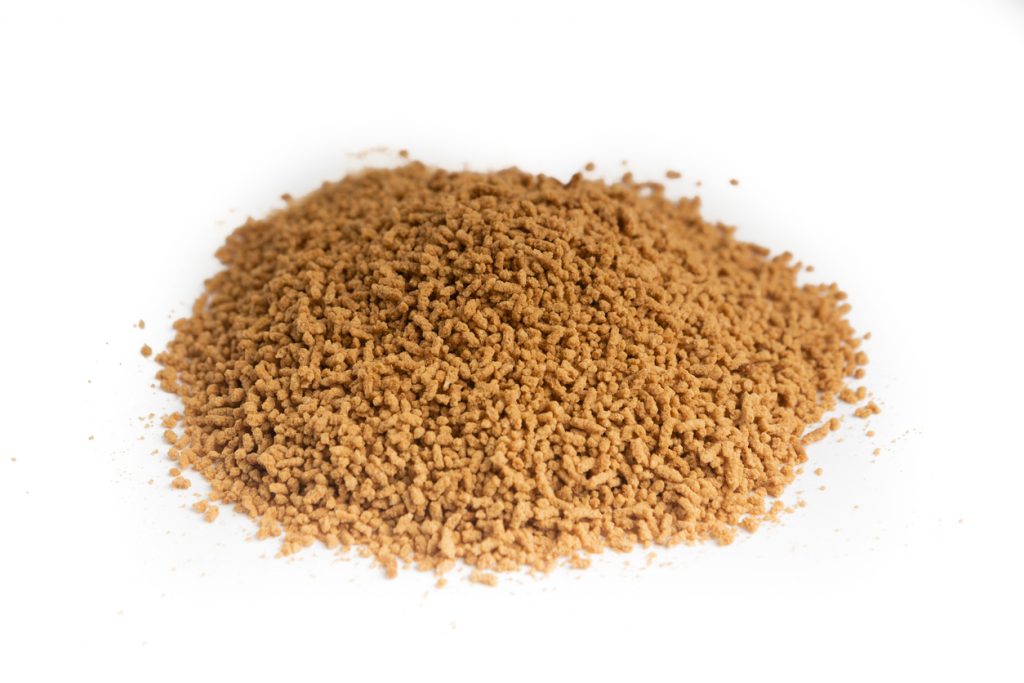Isatis Root

What is Isatis Root?
Isatis Root (ban lan gen, 板蓝根) comes from the plant called Isatis Indigotica, which originated in China and India. Today, the plant is cultivated in the West as well. Greyish-yellow or brownish-yellow in colour, the plant has small rootlets or protuberances that are dark green or brown. Traditionally, the plant is harvested in the Autumn, where the Isatis Indigotica Root is removed from the soil and dried under the Sun.
The herb has an elongated cylindrical body that is about 10 to 30cm long, 3 to 8mm in diameter. It has longitudinal wrinkles, horizontal scars and rootlet scars. The plant thrives in fertile soil of well-drained areas that are exposed to sunlight because it is unable to grow in the shade.
In Traditional Chinese Medicine (TCM), Isatis Root falls under the category of ‘Herbs that cool the Blood’. This herb can help to clear inflammatory and infectious conditions caused by Internal Heat. Cold in nature, Isatis Root helps individuals who have too much ‘Heat’ in their body, such as those who are experiencing Yang Excess or Yin Deficiency, to restore a healthy yin-yang balance.
Bitter in taste, Isatis Root has a cleansing action on the human body by clearing Heat, drying Dampness and promoting elimination via urination or bowel movements. In particular, Isatis Root targets the Stomach and the Liver. The Stomach is responsible for receiving and ripening ingested food and fluids, as well as descending the digested elements downwards to the Small Intestine. On the other hand, The Liver is in charge of regulating the movements of qi, body fluids, and balancing our emotions.
Functions and Benefits of Isatis Root
Traditional Chinese Medicine (TCM) shows that Isatis Root has 2 main functions:
Firstly, Isatis Root can expel Heat and Fire Toxicity to resolve Warm diseases and external contraction of Wind Heat. This herb can clear Heat and purge fire when it enters the qi system in the human body. It can also cool the blood in the blood system. Hence, this herb is often used for symptoms such as fever, mumps and erysipelas.
Secondly, Isatis Root can relieve symptoms caused by interior excessive Heat-toxicity, such as swollen throat and swelling of both cheeks. By clearing Heat from the Lungs and the Stomach to alleviate sore throat and dissipate nodulation, this herb can also treat attacks by epidemic toxicity and Wind-Heat. It can be used singly or combined with other Wind-Heat dispersing, toxicity-removing and sore-throat-alleviating herbs.
Other common symptoms that Isatis Root is often used to treat include: headache, infection with swollen head, dark reddish purple tongue, scarlet fever, erysipelas, pharyngitis, sore boils, bunacles, chicken pox, measles, hepatitis, cold, flu, epidemic cerebrospinal meningitis, epidemic encephalitis B, pneumonia, unconsciousness, hematemesis, bleeding from five sense organs or subcutaneous tissue, pink eye causing by inflammation, shingles, and osteomyelitis.
Other than the above Isatis Root benefits, modern research has also suggested that Isatis Root possesses antibacterial and antiviral properties, which can help to strengthen the immune system. These properties are why this herb is included in the popular COVID-19 herbal remedy Lianhua Qingwen Jiaonang. Also, its healing properties may be able to alleviate skin issues such as skin rashes and Hand Foot Mouth Disease as well.

How to Use Isatis Root
The usual dosage of Isatis Root is 10-30g.
Fresh Isatis Root is difficult to find, but it may be available in some specialty food stores. Isatis Root is more commonly found in the forms of dried and cut roots, pills, powder and in other supplements.
Other than health supplements for respiratory health and throat health, Isatis root is sometimes added to cosmetic products to be applied directly to the skin. Such products are usually meant to alleviate skin conditions such as psoriasis.
Also, Isatis Root can be used to make herbal tea or found in ready-made beverages too.

Cautions and Side Effects of Isatis Root
Isatis Root should not be used by individuals who are experiencing a weak pulse, weak constitution, or Yang Deficiency.
While there are no known drug interactions with Isatis Root as of this writing, it is always best practice to consult your healthcare provider before deciding to add Isatis Root into your diet.
Summary
Here is a summary for Isatis Root:
- Herb name (Chinese): 板蓝根
- Herb name (Pin Yin): bǎn lán gēn
- Herb name (English): Isatis Root
- Herb name (Botanical): Radix Isatidis
- Origin of species: Isatis indigotica Fort.
- Part(s) of herb used: Root
- Geo-specific habitat(s): Hebei, Jiangsu, Zhejiang, Anhui
- Taste(s) & Properties: Bitter; Cold; Administrates the Heart and Stomach meridians
- Actions: Provides relief for early symptoms of influenza and sore throats; Eases skin rashes or inflammatory conditions.
References
Dong, W. H., Liu, J. X., Mou, X. J., Liu, G. S., Huang, X. W., Yan, X., … & Long, Y. Z. (2020). Performance of polyvinyl pyrrolidone-isatis root antibacterial wound dressings produced in situ by handheld electrospinner. Colloids and Surfaces B: Biointerfaces, 188, 110766. [Accessed on 26th September 2022]
Li, X., Hou, R., Yue, C., Liu, J., Gao, Z., Chen, J., … & Hu, Y. (2016). The selenylation modification of Epimedium polysaccharide and Isatis root polysaccharide and the immune-enhancing activity comparison of their modifiers. Biological trace element research, 171(1), 224-234. [Accessed on 26th September 2022]
Liu, Y., Chen, M., Guo, Q., Li, Y., Jiang, J., & Shi, J. (2017). Aromatic compounds from an aqueous extract of “ban lan gen” and their antiviral activities. Acta pharmaceutica sinica B, 7(2), 179-184. [Accessed on 26th September 2022]
Share this article on
